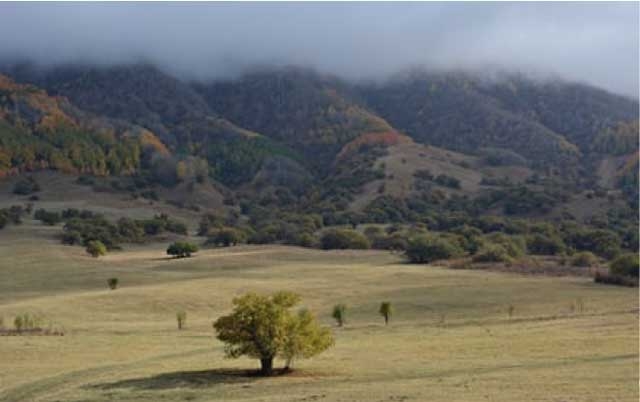Pest status of codling moth in China
(Continued from last month)
More than 60% of the apple production in China is in five eastern provinces where codling moth does not yet occur.
A similar situation pertains to pears: Hebei near Beijing is the biggest pear growing province.
However, codling moth is a serious pest in the western provinces of Xinjiang and Gansu and the northern provinces of Inner Mongolia, Heilongjiang and Jilin.
It is now moving into the important northern province of Liaoning and there is concern that it will establish in Shaanxi, the biggest apple growing province in China.
A total of 438,000 hectares of apples and 120,000 hectares of pears are grown in the current codling moth areas.
Where it occurs, it is every bit as bad as in Australia. In hot areas like Gansu, codling moth can go through three generations in a season—as it can in the Goulburn Valley in Victoria.
In cold areas like Heilongjiang (up against Siberia), codling moth has only one generation season.
Movement of apples and pears from the western China to the eastern provinces is not restricted and codling moth will continue to spread in China.
Control of codling moth in China
For several decades in China, the preferred method for protection of fruit from codling moth has been bagging individual fruit.
This is labour intensive and expensive. Apple and pear production in China is adopting western methods. Farms are amalgamating and yields per hectare are increasing.
At the same time, labour is becoming scarce and more expensive in rural areas. Bagging fruit is on the way out.
Insecticides were used haphazardly a little over a decade ago but are now tightly regulated.
Organophosphate sprays like azinphos methyl and parathion are banned. This is a good thing for the safety of Chinese farmers and consumers but it limits the options available for management of codling moth. Synthetic pyrethroids and neonicotinoids are now widely used.
New developments in codling moth control
Work done at Michigan State University and at DEPI in Victoria has provided leads which have allowed Sinogreen to develop a better pheromone dispenser for mating disruption of codling moth.
This has recently been registered in Australia.
Research into female codling moth attractants has also made great strides in Australia, New Zealand and USA in recent years, and we can expect ‘attract and kill’ products targeting female moths in a few years time.
This will supplement current mating disruption technology where populations of the pest are high.
See this article in Tree Fruit Feb 2018




















